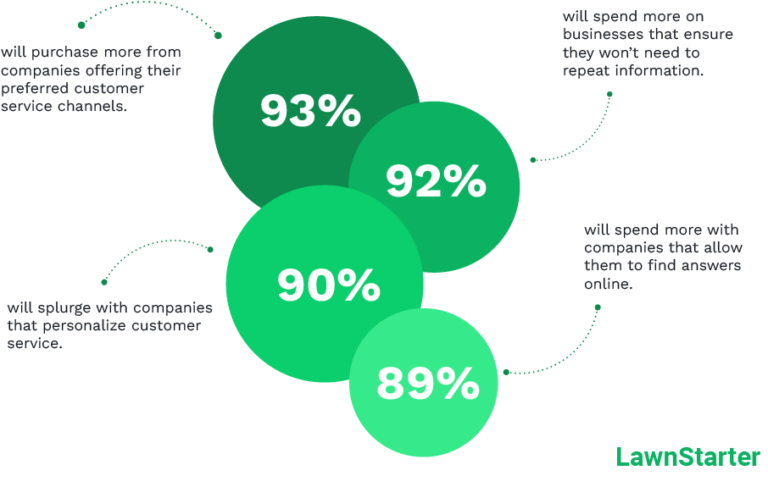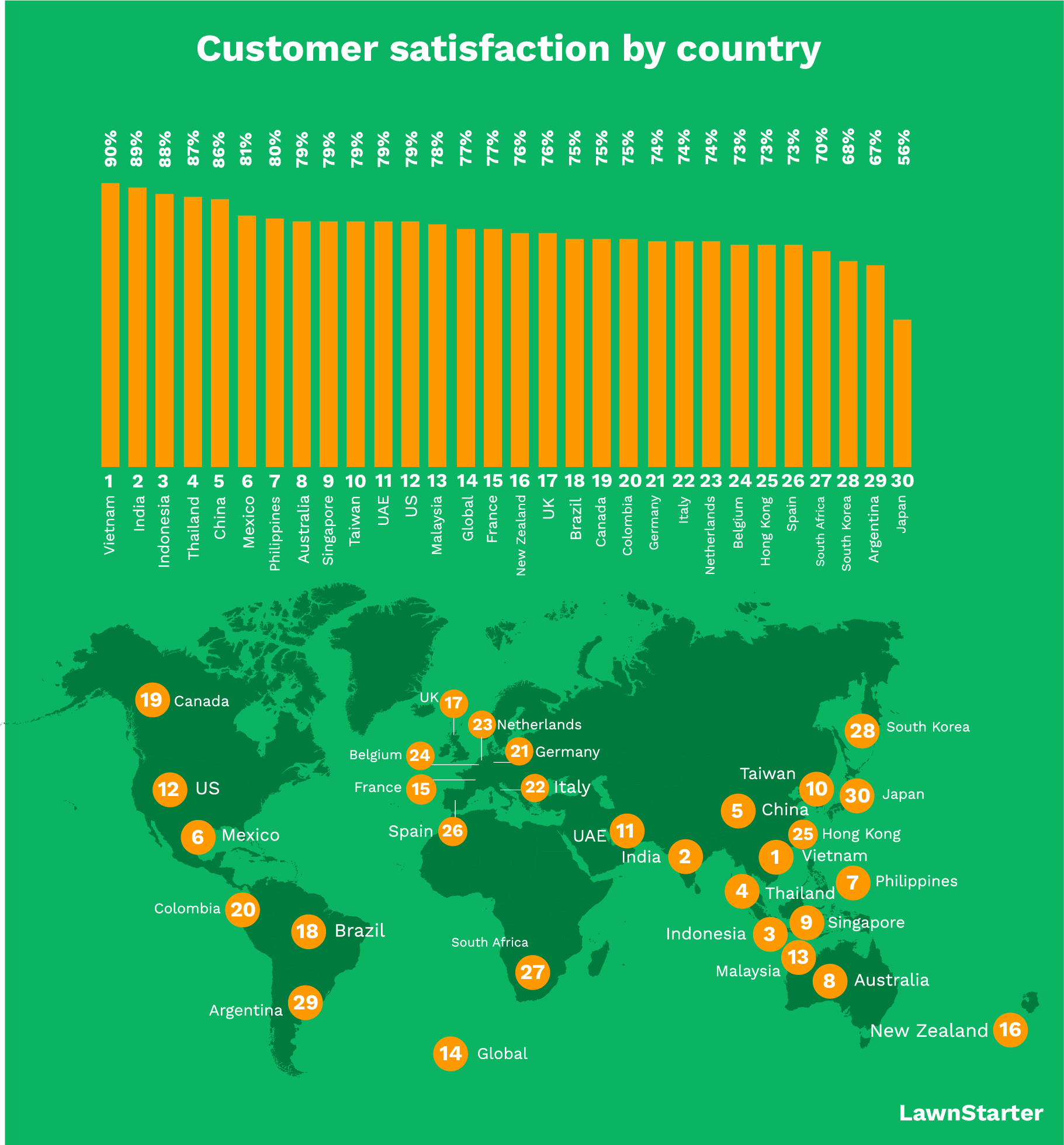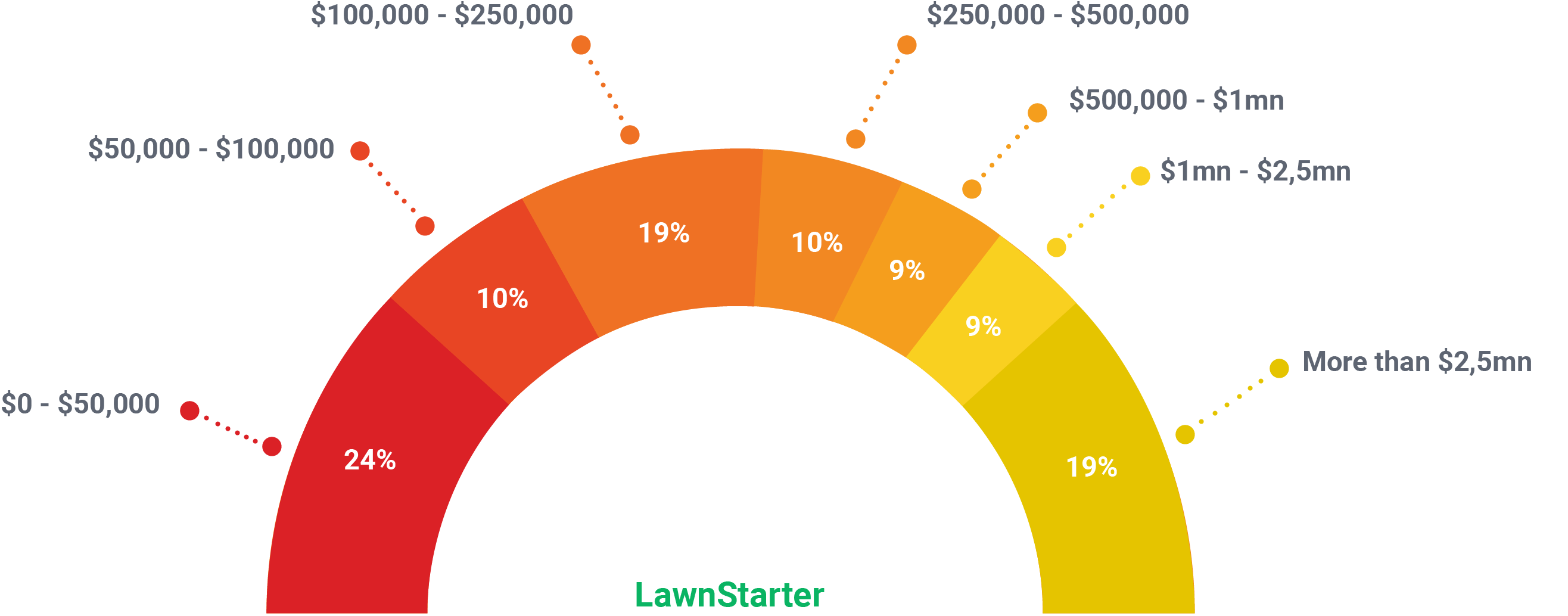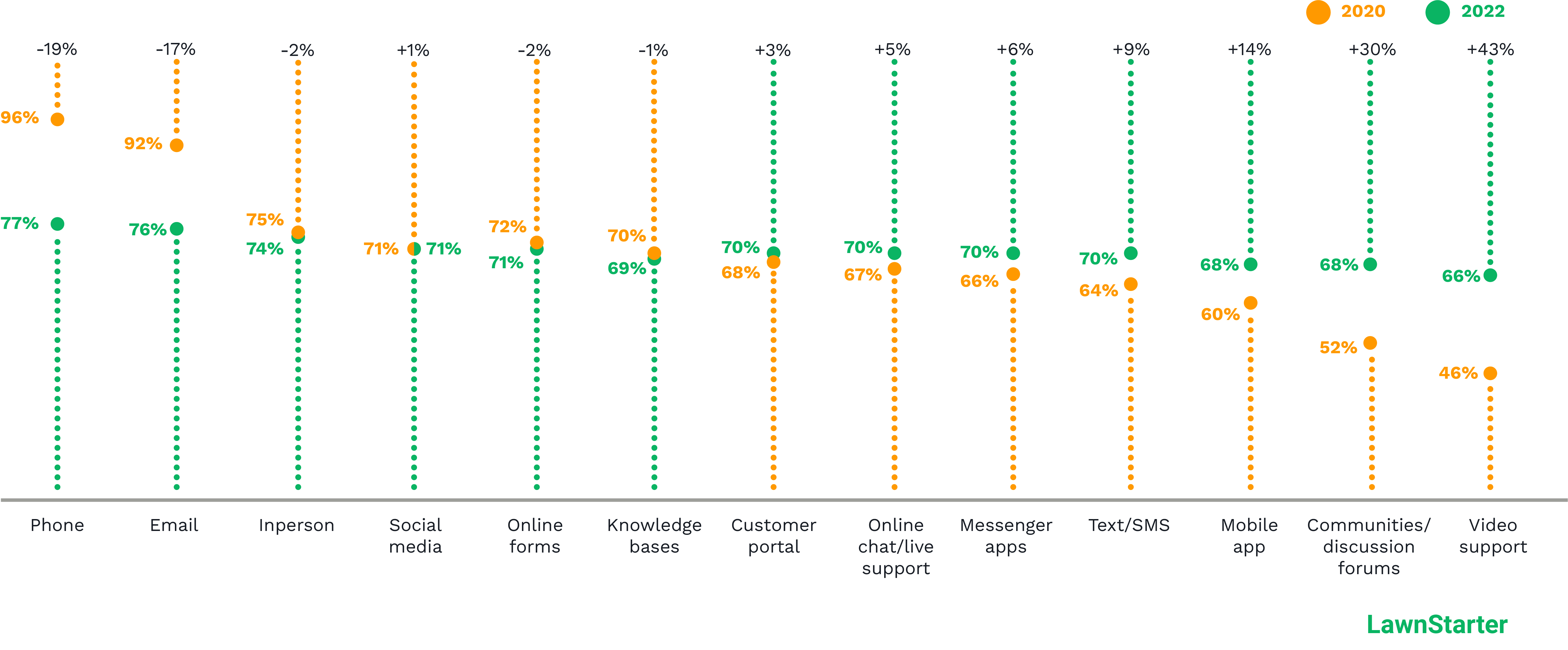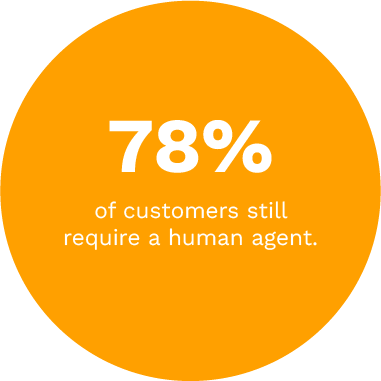Customer Expectations
Today’s consumers have higher expectations for customer service, with over 65% reporting having higher expectations today than 3-5 years ago. Positive customer service experiences are a key component in fostering brand loyalty, according to 77% of consumers.
93% will purchase more from companies offering their preferred customer service channels (ex: chat). 92% will spend more on businesses that ensure they won’t need to repeat information. 90% of customers will splurge with companies that personalize customer service. 89% will spend more with companies that allow them to find answers online.
The impact of positive customer experiences
on customers' behavior
